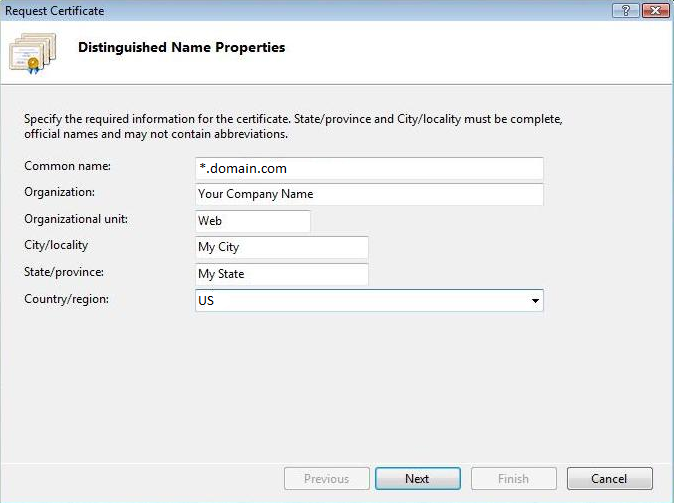How to Generate a WildCard SSL Certificate Signing Request (CSR)
Check out this post to learn how to generate a WildCard SSL Certificate Signing Request (CSR) for Apache + Mod SSL + OpenSSL. Read more below!
Join the DZone community and get the full member experience.
Join For FreeDue to the vast number of emails, calls, and live chat requests being received from SSL users on a daily basis, we have compiled this comprehensive guide. Many SSL users rely on the Certificate Signing Request (CSR) generation, which is required to obtain a certificate from Certificate Authorities (CA).
In this guide, we will specifically address the process of obtaining a certificate signing request for Apache + Mod SSL + OpenSSL servers. Here, we have included the easy and quick steps of CSR generation from the major Certificate Authorities (CAs) on the web.
In order to create a CSR, users need two types of keys known as private and public keys. Next, in order for the CSR to be generated by all keys, the password and certificate must contain the same information before installing any certificate on the server.
Step1: Creation of the Private Key
Here, we have what is commonly known as the OpenSSL utility, which is mostly used to generate the private key and CSR. The OpenSSL utility comes standard with any OpenSSL package and should be installed on the following path:
/usr/local/ssl/binIf the OpenSSL utility package is installed on a different path, please refer to the information below to adjust the OpenSSL package installation path.
Enter the following commands at the prompt:
opensslgenrsa -des3 -out .key 2048The above command will raise a 2048 bit RSA private key, and it will store at the file www.myhostname.com.key.
Important Note:
All SSL Certificate CSRs must have 2048-bit key length
When prompted with the password command, you need to be sure to enter a secure password that can also be remembered. This password will not only protect the private key, but it will be essential to the secure the certificate as well. That being said, a password that cannot be recalled is about as useless as any bad or unsecure password (i.e. 1234321, PASSWORD).
To bypass the passphrase requirement, omit the -des3 option when generating the private key. However, if you choose to leave the private key unprotected, Symantec recommends access to the server be heavily restricted so that only authorized server administrators can access or read the private key file.
Step 2: Generation of the CSR (Certificate Signing Request)
Enter the following command at prompt:
opensslreq -new -key .key -out .csrIf you are using OpenSSL on a Windows server you may be able to use the following direct path to reach “openssl.cnf”:
opensslreq -new -key .key -config
“c:\Apache Software Foundation\Apache2.2\conf\openssl.cnf”-out .csrYou must now enter the mandatory information of the organization in order to create the CSR. The following is a basic overview of each requirement.
Certificate Signing Request or CSR Guide for Wildcard SSL Certificate
- First, go to the start menu and open the Internet Information Services (IIS) manager.
- You will find the Connections column on the left. Double-click on Server Certificates listed in the column.

- Now, go to the Actions column on the right-hand side and double-click on Create Certificate Request.
- Enter all your company information in the Request Certificate window and click Next.

- Now, let the default Cryptographic Service Provider remain as it is and change the bit length to 2048 bit or higher. Click Next.

- Save the certificate by browsing the file name and click Finish.

Country Name: Enter the two-letter code without punctuation of the respective country (i.e. US, UK)
State or Province: Enter the complete state name, please be sure to not abbreviate or shorten it. (i.e. New York, not NY)
Locality or City: The locality field is the city or town name. Again, do not abbreviate. (i.e. Saint Petersburg, not St. Petersburg)
Company: If the company or organization name has any symbol, such as &, @, or *, included within their name, the symbol must be properly spelled out. Here are the illustrations of (i.e. AB & C Corporation would be AB and C Corporation)
Organizational Unit: This field is optional, but, if provided, this information will serve as additional authentication for obtaining the certificate from the CA. But, if you prefer to skip this step, simply press enter on the keyboard.
The common name is the host + domain Name. The information provided here will look much like something along the lines of “*.company.com”.
Do not try to add an email address, challenge passwords, or add an optional company name when generating the CSR.
At this point, you will have successfully generated both your private and public keys. The private key (www.hostname.com.key) is stored locally on the server and is employed for decryption. The public key, in the form of a WildCard SSL Certificate Signing Request (certrequest.csr), will be for certificate enrollment.
To copy and paste the information into the enrollment form, open the file in a text editor, such as Notepad or Vi, and save it as a .txt file. Do not use Microsoft Word — it will insert extra hidden characters that will alter the contents of the CSR rendering it useless.
In order to know more about Wildcard SSL Certificate security features and its functionality, if you are still not sure whether you have bought right Wildcard SSL certificate with the appropriate security feature, then visit our official wildcard SSL certificate and choose the right one.
Easy and quick CSR generation tool from experts of Wildcard SSL certificate. More information visits our CSR generation tool page.
Published at DZone with permission of Jim Aron. See the original article here.
Opinions expressed by DZone contributors are their own.

Comments